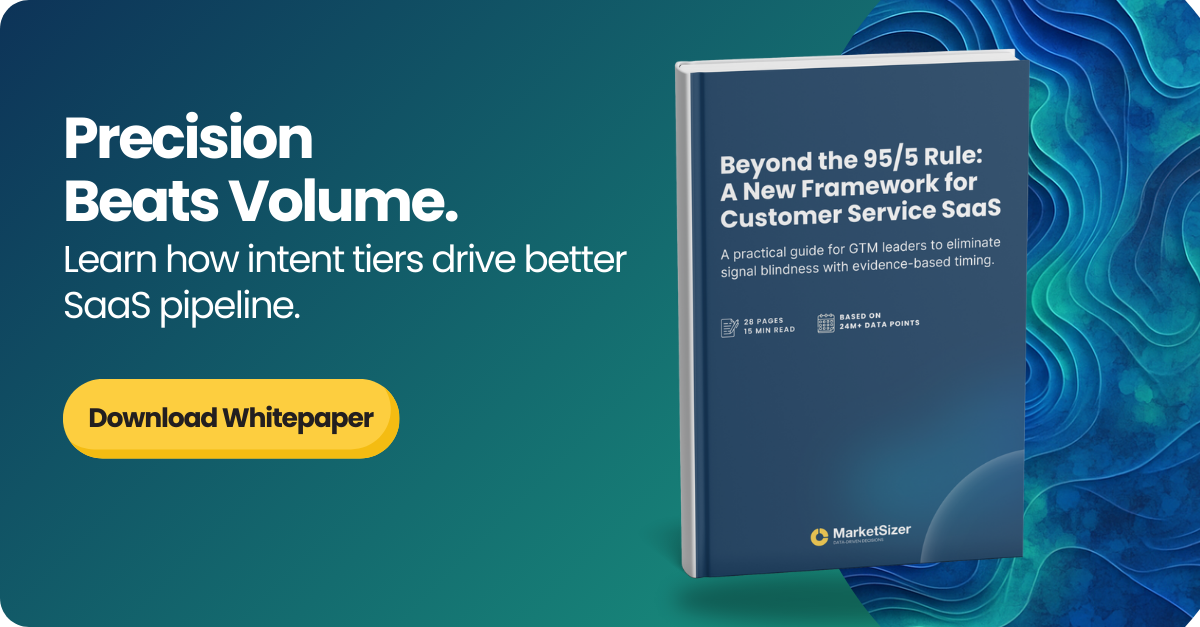.png)
Most Customer Success (CS) teams don’t suffer from a lack of effort. They’re putting in the hours, prepping QBRs, chasing renewals, and doing everything they can to keep customers engaged.
So why do so many still get blindsided by churn, lose deals at renewal, or miss the moment to drive expansion?
It comes down to one thing: timing.

Even high-performing CS teams fall victim to what we call signal blindness: the inability to see the right customer signals early enough to take meaningful action.
That critical account that churned? You thought it was stable.
The renewal you lost? No warning signs until the contract was already signed with a competitor.
That expansion opportunity? Gone before it even hit your radar.
Inside the CRM, signal blindness shows up as:
The result? CS teams are constantly reacting, not leading. And by the time the dashboard tells the truth, it’s often too late.
Effort is important. But without timing, even the hardest-working CS teams are reactive instead of proactive.
You can build a stunning QBR… but if the account’s gone cold, it won’t matter.
You can monitor health scores… but they often lag weeks behind real behaviour.
You can prioritize based on gut feel… but without early signals, you’re guessing.
When the timing is off, CS becomes a firefighting unit, dealing with problems after they’ve already turned into churn, renewal loss, or missed growth.
Signal blindness isn’t just frustrating, it’s expensive. Here's how it shows up:
The cost? Lower net revenue retention, reactive CS cycles, and missed revenue your team should have owned.
To lead revenue outcomes, CS teams need a new breed of signals: real-time, relevant, and deeply embedded in the customer lifecycle.
So what are the signals CS teams actually need?
The problem? These signals rarely make it into CRMs in real time. Dashboards are slow. Surveys are partial. Intent tools are noisy. And traditional workflows aren’t wired to handle real-world velocity.
This is where signal-led CS comes into play. It’s a proactive, data-driven approach built on subscription intelligence which means live visibility into your customers’ actual behaviors, priorities, and signals.
At MarketSizer, we call this At MarketSizer, we call this subscription intelligence: the continuous monitoring of churn, renewal, and expansion signals derived from real subscription data pushed directly into the tools your CS teams already use.
This isn’t more dashboards. It’s embedded signal intelligence that:
The result? No more guesswork. No more retroactive “lessons learned.” Just real-time clarity that lets CS lead the revenue conversation.
In 2025, Customer Success is no longer a “support function.” It’s a core part of revenue.
Boards and CROs are watching net retention as closely as new logo acquisition. That means CS must evolve from managing accounts to driving outcomes.
But to own revenue, you must first own the signals.
Sales and marketing already leverage signal intelligence. Now it’s CS’s turn to catch up—and leap ahead.
Signal-led CS isn’t just an upgrade. It’s a competitive advantage.
Customer Success teams don’t fail from lack of effort.
They fail because they’re flying blind, missing the signals that matter most, at the moments that matter most.
In a subscription-driven world, timing beats effort every time.
To fix it, CS leaders must eliminate signal blindness and adopt a signal-led strategy powered by real-time subscription intelligence.
In 2025 and beyond, if Customer Success owns the number, it must also own the signals.
Signal blindness is the lack of real-time visibility into customer behaviors, like usage drop-offs, renewal signals, or competitor evaluations that CS teams need to act on proactively.
They rely on lagging indicators like health scores or NPS. By the time problems surface, it’s often too late to intervene.
They’re real-time alerts that reveal key lifecycle moments (renewal windows, competitive shifts, usage spikes) that help CS teams act before outcomes are decided.
It delivers relevant, real-time signals directly into CS workflows, enabling proactive actions on churn risk, renewals, and expansion.
Subscription intelligence focuses on proactive, signal-rich data. Dashboards are often backward-looking and fragmented. The former empowers timing; the latter explains what already happened.
"Timing Intelligence 101 for a cross-functional view of timing across Sales, Marketing and CS."